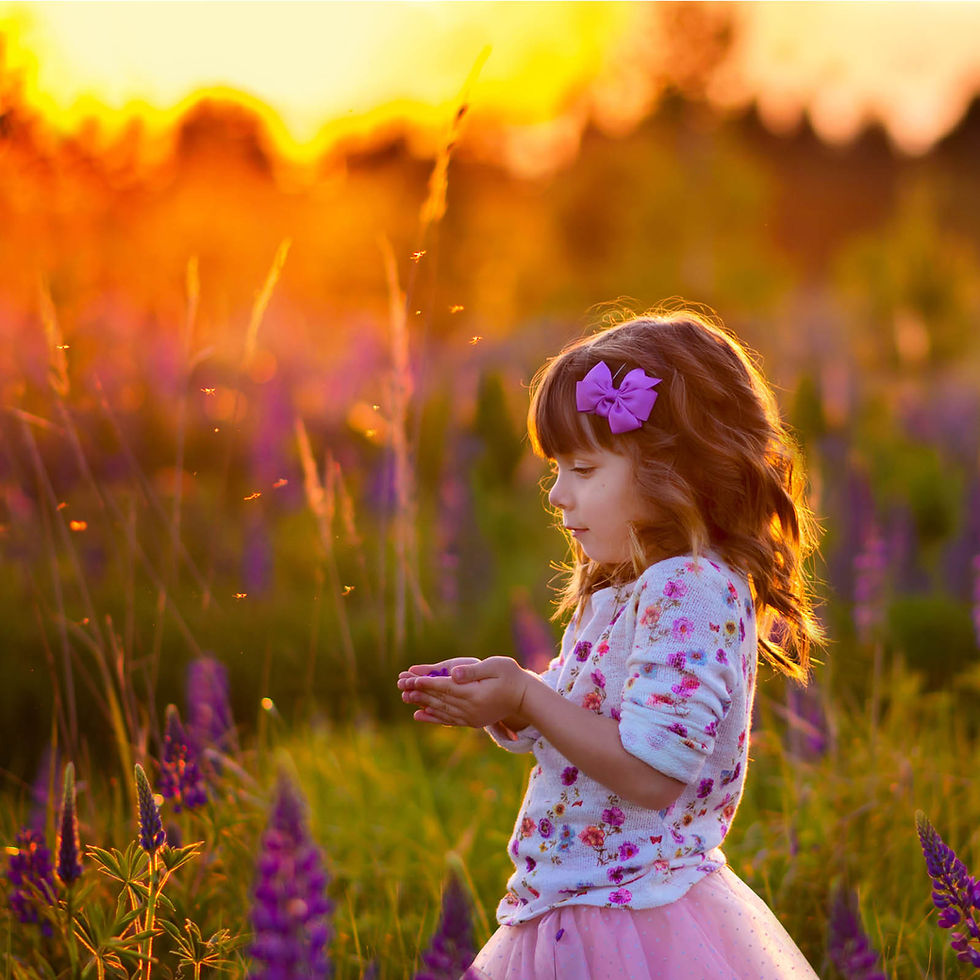Anxiety in children. Can curiosity be a remedy?
- Melissa R
- Sep 3, 2018
- 3 min read
We are all aware of the increasing experience of anxiety in children, but what are its causes and what can we do about it?
(Just want the remedy? See the mindfulness exercise at the bottom of the page.)

I will be authoring a short series of blogs that explore some of the contributing factors to anxiety and exaggerated fear responses in children, and what we can do to support wellbeing as both a treatment and a preventative measure.
Let's start by learning a bit about the science behind anxious reactions. Our brains are hardwired to be able to respond quickly and without thinking in a dangerous situation. It's not often we meet a lion in our everyday life these days, yet the same physiological reaction can take over when the comparatively insignificant events of modern life occur!
Our brains are divided into parts, each dedicated to manage and respond to stimuli, using chemical messengers to communicate information around the brain and body. When we are calm, and our brains are functioning well, we create the positive neurotransmitters responsible for forming new connections and passing information between the thinking brain and our emotional brain. We call this communication emotional- intelligence.

When we encounter stress, the ancient part of our brain responsible for keeping us safe is triggered, flooding our system with adrenaline and cortisol and shutting down other brain processes in order to drain all the fuel required to power our reactions. It's this response that prevents rational thinking and empathy in a fearful moment, and its overuse can become a well-worn track in the brain.
You might recognise this effect in yourself and others, in our fast-paced world it has become all too common. For children, this kind of persistent stress can lead to this part of the brain becoming overdeveloped and as a result other higher emotional and reasoning processes may not develop as fully. We see this show up in the behavior of children as anxiety, hyperactivity, poor impulse control, lack of empathy, and less ability to problem-solve.
So what can we do?
As seemingly complicated as this situation and it's causes are, the solution actually lies in how the problem was created. Repeated experiences create brain connections. Our brain is plastic, and over time we can as easily create one well-worn track as another!
We can start making better connections right now, with simple, everyday practices to stimulate those positive neurotransmitters. We know with kids it's got to be fast, fun and engaging, so let's begin with a small and informal mindfulness exercise that can help bridge the gap from anxiety to curiosity.
***
The 5 Senses exercise
(This can be done in any way that is appropriate for the time of day and the surroundings.)
*Begin by taking a moment to be still and notice your breathing.
*Now look around slowly and notice 5 things that catch your eye. Are they bright, shiny or colourful? Are they big, small or in between? What kinds of shapes and textures can you see? Count 1, 2, 3, 4, 5 things to see.
*Now close your eyes and listen. Can you hear four different kinds of sounds? You might hear your own breath. You might hear the sound of a bird or the wind. Can you hear sounds that are close? Can you hear sounds that are far away? Count 1, 2, 3, 4 sounds.
*Open your eyes and now see if we can feel 3 things. Put your hands on your knees, can you feel your skin or the fabric of your clothing? You can hold your own hand or pick up an object. Do you feel things that are rough or smooth, strong or soft? Count 1, 2, 3 things that you can feel.
*Next, we're going to find 2 things to smell. Try sniffing the air, what can you smell? You can lift your hand to your nose to smell your skin. Can you think of words to describe the things you can smell? Count 1, 2 things to smell.
*Last thing we're going to do is find one thing we can taste. What was the last thing we ate? Can we still taste it on our tongue? Is it sweet or sour or salty? Can we taste anything on the air?
*Now that we have finished exploring our senses let's take a deep breath and take our curious minds into whatever we do next!

***
Next we need to explore the question- what is the opposite of the fight, flight, fear response? It can give us clues as to why curiosity may the the remedy to anxiety.





Comments